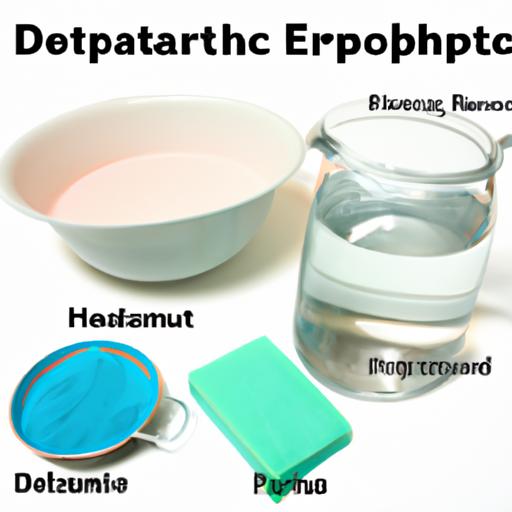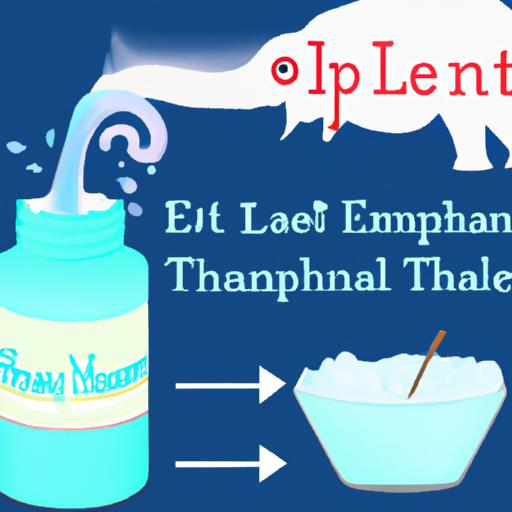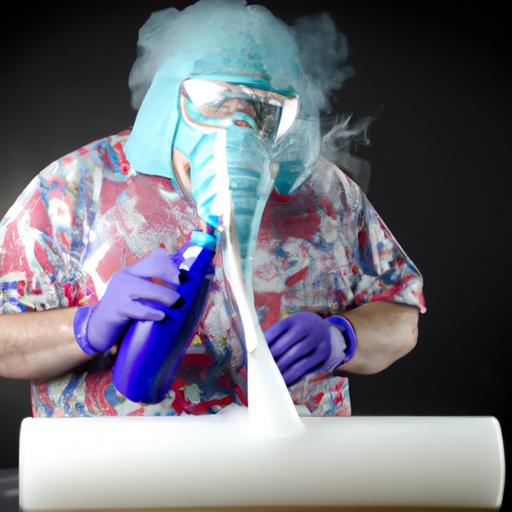Learn how to create an explosive and mesmerizing foam eruption with our elephant toothpaste recipe using 3% hydrogen peroxide. Fun for all ages!
Have you ever wondered how to create a mesmerizing chemical reaction right in your own home? Look no further! In this article, we will guide you through an exciting experiment known as the “elephant toothpaste,” using a simple recipe that incorporates 3% hydrogen peroxide. Get ready to witness a foamy eruption that will leave you in awe!
Introduction: Discover the Magic of Elephant Toothpaste
What is Elephant Toothpaste?
Elephant toothpaste is a thrilling experiment that involves a rapid decomposition reaction, resulting in an exothermic release of oxygen gas. This reaction creates a spectacular eruption of foam resembling the toothpaste squeezed from a giant elephant-sized tube. It is a popular science experiment enjoyed by kids and adults alike.
Importance of Using 3% Hydrogen Peroxide
The success of the elephant toothpaste experiment relies heavily on the use of 3% hydrogen peroxide, an essential ingredient. Unlike higher concentrations, 3% hydrogen peroxide is safe to handle and readily available at most drugstores. It ensures a controlled reaction while still producing an impressive foam display.
Benefits of Making Elephant Toothpaste at Home
Creating elephant toothpaste at home offers numerous advantages. Firstly, it’s a great way to engage in a fun and educational activity with your family or friends. Secondly, it encourages scientific curiosity and fosters an interest in chemistry. Lastly, it allows you to marvel at the wonders of science in the comfort of your own home.

Gather the necessary ingredients for a successful elephant toothpaste experiment.
Ingredients Required for Elephant Toothpaste Recipe
To create your very own elephant toothpaste, you will need a few simple ingredients. Gather the following items before embarking on this exciting experiment:
1. 3% Hydrogen Peroxide
Ensure you have a bottle of 3% hydrogen peroxide solution to guarantee a safe and controlled reaction. This concentration is readily available at your local drugstore.
2. Dry Yeast
Yeast acts as a catalyst in the elephant toothpaste reaction, accelerating the decomposition of hydrogen peroxide. Use a packet of dry yeast, commonly found in the baking section of grocery stores.
3. Liquid Dish Soap
Liquid dish soap serves as a surfactant, lowering the surface tension of the reaction mixture. This allows for the creation of a large and foamy eruption. Any brand of liquid dish soap will suffice.
4. Warm Water
You’ll need warm water to activate the yeast, ensuring it performs its catalytic role effectively. Use water at a temperature of around 40°C (104°F) for optimal results.
5. Food Coloring (optional)
To add a touch of visual excitement to your elephant toothpaste, consider incorporating food coloring. This step is entirely optional but can enhance the overall experience.
6. Safety Precautions
Before diving into the experiment, it’s essential to prioritize safety. Make sure to wear protective goggles and gloves to shield your eyes and hands from any potential splashes or spills.

Follow these simple steps to create your own elephant toothpaste and witness the incredible foam eruption.
Step-by-Step Instructions to Make Elephant Toothpaste
Now that you have gathered all the necessary ingredients, let’s dive into the step-by-step process of creating your very own elephant toothpaste. Follow these instructions carefully for a successful and awe-inspiring eruption:
1. Mixing the Ingredients Properly
In a clean container, combine ½ cup of 3% hydrogen peroxide, 1 tablespoon of liquid dish soap, and a few drops of food coloring if desired. Gently mix the ingredients together, ensuring they are thoroughly combined.
2. Preparing the Reaction Container
Choose a container that can handle the foamy eruption without overflowing. A plastic soda bottle works well for this purpose. Make sure it has a narrow neck, as this will help contain the foam and create a more dramatic effect.
3. Pouring the Mixture into the Container
Carefully pour the mixture from step 1 into the reaction container. Take caution not to spill or jostle the container excessively, as this could trigger an undesired reaction.
4. Observing the Reaction
Now comes the exciting part! Observe as the reaction unfolds before your eyes. The moment you add the yeast to the mixture, a vigorous reaction will occur, resulting in an impressive eruption of foam. Stand back and watch in amazement!
5. Disposing of the Remains Safely
Once the reaction has subsided, it’s important to dispose of the remains responsibly. The foam generated is essentially a soapy solution, so it can be safely rinsed down the drain with plenty of water. Remember to clean the container thoroughly after use.

Ensure a successful elephant toothpaste experiment with these helpful tips and safety precautions.
Tips for a Successful Elephant Toothpaste Experiment
To ensure your elephant toothpaste experiment is a resounding success, keep the following tips in mind:
1. Using Fresh Ingredients
For optimal results, use fresh ingredients whenever possible. Fresh hydrogen peroxide, yeast, and dish soap will yield the best reaction and produce the most impressive foam.
2. Ensuring Proper Mixing Ratios
Maintaining the correct ratios of hydrogen peroxide, dish soap, and yeast is crucial for a successful experiment. Any deviations from the recipe may hinder the reaction or result in a less dramatic foam eruption.
3. Controlling the Reaction
Remember to handle the experiment with care. While it’s exciting to witness the foamy eruption, be cautious not to touch the foam or breathe in the fumes directly. The reaction can be quite vigorous, so maintain a safe distance.
4. Experimenting with Different Variables
Once you have mastered the basic elephant toothpaste recipe, feel free to explore variations. You can experiment with different food coloring options, adjust the quantities of ingredients, or even try alternative catalysts. Let your creativity guide you!
5. Cleaning Up After the Experiment
After the experiment, ensure you clean the area thoroughly and dispose of any waste properly. Rinse the reaction container with water and clean it with soap to remove any residue. By leaving your experiment area tidy, you can enjoy the excitement without any lingering mess.
Now that you have the knowledge and the recipe, it’s time to unleash your inner scientist and create your very own elephant toothpaste at home. Gather your ingredients, follow the instructions carefully, and prepare to be amazed by the explosive foam eruption. This thrilling experiment is a fantastic way to engage in hands-on science and spark a lifelong love for chemistry.
So, what are you waiting for? Get ready to witness the magic of elephant toothpaste firsthand. For more exciting experiments and insightful articles on oral health, visit BestWaterFlosserHQ.com. Remember, science is all about exploration and discovery, so embrace the wonders of chemistry and have a blast with your homemade elephant toothpaste!
Click here to check out the conclusion of the elephant toothpaste experiment. And if you are interested in another variation of the elephant toothpaste recipe using potassium iodide, click here.







